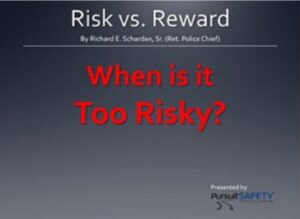Officers
Welcome to this page. If you serve in law enforcement, thank you for your dedication.
Retired Captain Tom Gleason says, “We need to enforce the law, but we need to enforce it in a way that we don’t cause more risk to the public we serve.”
It is expectation and belief that encourages us to trust the police. We trust the promise that law enforcement personnel and their departments are set up to protect us. We are grateful to the professional members of law enforcement who continue to strive to improve their pursuit and response-call policies. PursuitSAFETY believes pursuits should only be conducted when there is no other way to apprehend a fleeing driver who poses an imminent threat to public safety, i.e., to prevent future injuries and deaths. A life-saving policy works when it is mandatory that officers follow the policy.
At left, Tom visits a memorial for his son, Cpl. Brian Gleason. Brian was a passenger in a car driven by another MP, who forgot his training.
Tom said, “When Brian was killed, I made a commitment to do what I could to keep any other parent from hearing the same horrible news—that would be either an officer being killed or a civilian being notified their loved one died because of an officer’s actions or non-actions.”
Policy Standards
Geoffrey Alpert, an international expert who has research high-risk police activities for more than 30 years, states that the policy standards applied to the evaluation of a pursuit as well as to the decision to continue a pursuit needs to include the following three questions:
- If the pursuit were to result in injury or death, would a reasonable person understand why the pursuit occurred or was necessary?
- Is the need to immediately catch the suspect more important than the risk created by the pursuit?
- Do the dangers created by the pursuit exceed the dangers posed by letting the perpetrator escape?
Policy Development
Retired Police Chief Richard E. Schardan, Sr. has strategically set up this first in a series of “Risk vs. Reward” PowerPoint presentations for the law enforcement policymaker to decide what is too risky. For this presentation, he based his work on the IACP 2015 model policy. Be sure to review Chief Schardan’s notes on each slide.

Why Restrictive Pursuit Policies?
Restrictive pursuit policies not only work; they save lives.


